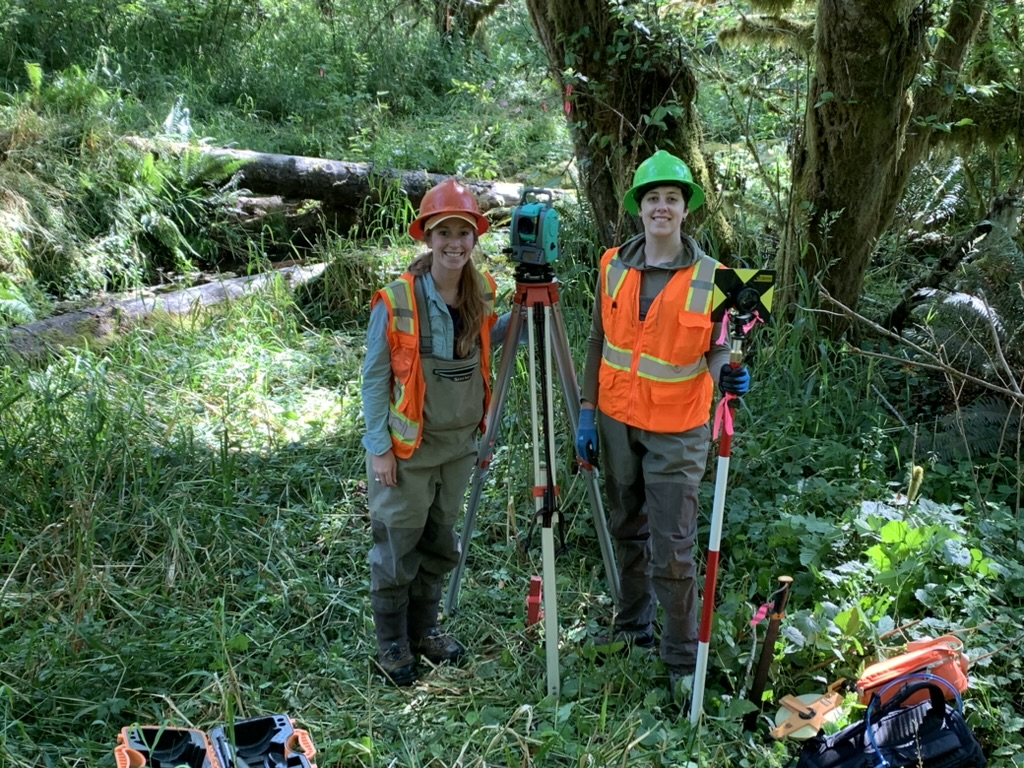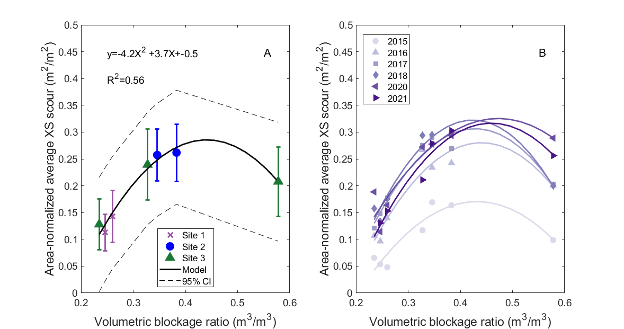Evaluation of the effectiveness of large wood as a restoration strategy to improve fish habitat, by Madelyn Maffia
Introducing large wood (LW) into streams for restoration purposes is a common practice, as it creates habitat through geomorphic processes like scouring, deposition, and sediment sorting. In this study, we investigated annual geomorphic adjustments (channel geometry and substrate size) over seven years in three tributaries of the Mill Creek network (Oregon, USA). Data included topographic surveys and surface pebble counts collected from 2014 (one year before LW introductions) to 2021 (six years after LW introductions). We quantified cross-sectional scour and deposition from the surveys and estimated sediment grain sizes and sorting from the pebble counts. Our analysis revealed that stream size influenced geomorphic adjustment, with smaller streams experiencing more scouring compared to larger streams over the six years. LW structures promoted increased scouring at the cross-section scale, with a strong relationship found between volumetric blockage ratio and scour across all sites. Volumetric blockage ratio values between 35% and 50% were associated with the most significant scouring changes, while values above 50% or below 35% were correlated with low scour. Instream changes in scour and deposition peaked around 3–4 years after LW introductions but persisted until the end of the monitoring period. Sediment size dynamics were influenced more by time since restoration than by proximity to LW jams. While LW introductions increased sediment sorting into patches, the degree of sorting declined 5–6 years post-restoration at all sites. Our findings offer insights into the long-term persistence and magnitude of instream changes associated with LW introductions, aiming to inform and enhance future restoration efforts.

